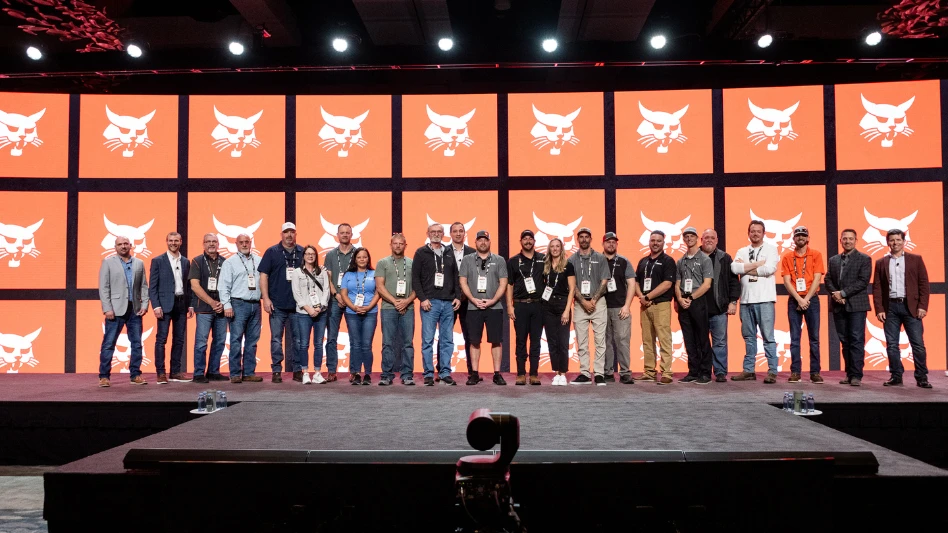One thing is for certain, mites are tiny pests who can cause big problems for landscape contractors and their clients.
However, with the right preventive program and some solid treatment practices, your clients’ ornamental trees and plants will look their best all season long and mites will be a thing of the past.
|
|
|
|
LITTLE SUCKERS. Stippling, webbing, wilting, drying and defoliation of leaves are the typical signs that a client’s ornamental trees and plants may be the unwitting hosts to an infestation of hemlock rust mite, spruce spider mite or any of the other usual pint-sized suspects. These tiny buggers do damage by sinking their mouth parts into the leaf cuticle on the undersides of leaves, causing drying and wilting as well as giving the foliage a bronze cast. In very severe infestations, defoliation occurs, which can lead to plant death.
Mites can become a problem on a wide variety of ornamental plants, from fruit trees to junipers and arborvitaes to many annuals and perennial flowers. However, diagnosing the symptoms of a particular mite infestation can be a challenge to contractors because these very small critters are very difficult to see without the aid of magnification. Likewise, not fully understanding the mite life cycles can complicate the type of product selected to combat an infestation.
There are two basic types of mites, which are generally referred to as cool- and warm-season mites. Cool-season mites, such as spruce spider mites, southern red and clover mites, peak in late winter to late spring with populations rebuilding in the fall.
Warm-season mites, such as two spotted, the European red mite and honey locust, peak in late spring through the early fall.
SMART SOLUTIONS. Contractors can reduce the risk of mite infestation by using dormant oils (horticultural oils) and reducing mulch levels around plant material. Overmulching plant beds creates a great winter home for mites, which will cause populations to build up rapidly once the warm weather sets in.
If this happens and a mite infestation sets in, then a contractor has two options to deal with the problem. One course of action is to treat the infected ornamental with a miticide applied with a backpack sprayer, which will bring about results in less then 24 hours.
The other option available to the contractor is to release predatory insects that feed upon the mites, which, while effective, may take up to three weeks in optimum weather conditions to bring the mite infestation under control. However, one of the most common mistakes contractors make in treating mite infestation is to use a broad-coverage chemical treatment that eliminates not only the mites but also the predatory insects feeding on them, which leaves the ornamental plants vulnerable to future infestation.
Competitive pricing for mite control services takes into account a number of factors, including the type of control product being used, the amount being applied, how much plant material is receiving treatment and the competitive labor rates for the contractor’s particular market. However, an average minimum price for mite control service would be around $50.
Preventative mite control can be a money maker and generate revenue for the contractor during slow times. However, the key is being able to identify what ornamental plant material is susceptible to mite infestation and then proposing preventative measures utilizing an Integrated Pest Management Program (IPM).
J.B. Toorish and Brian Kelley are part of LESCO’s Tech Services Department. They can be reached at fromthefield@gie.net or at 800/321-5325 ext. 6150 to answer technical questions.

Explore the June 2007 Issue
Check out more from this issue and find your next story to read.
Latest from Lawn & Landscape
- North by Northwest's charitable act for the Ronald McDonald House Charities
- Coxreels expands V-100 Series product line
- Landscape Workshop expands with 2 acquisitions
- Wilson360 adds Daniel Grange as new consultant
- Batman and business
- CH Products releases new tree stabilizer
- Savannah Bananas founder Jesse Cole to speak at Equip Exposition
- Catch up on last year's Benchmarking report







